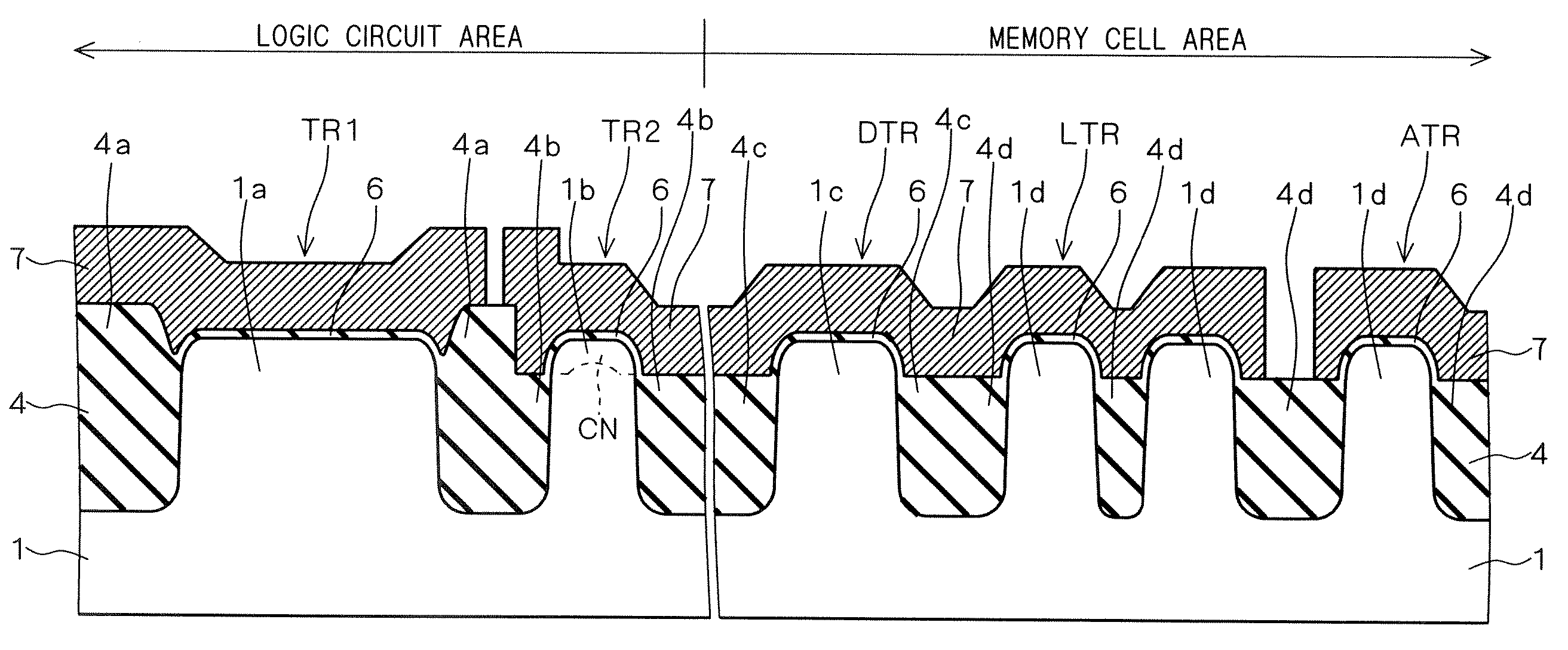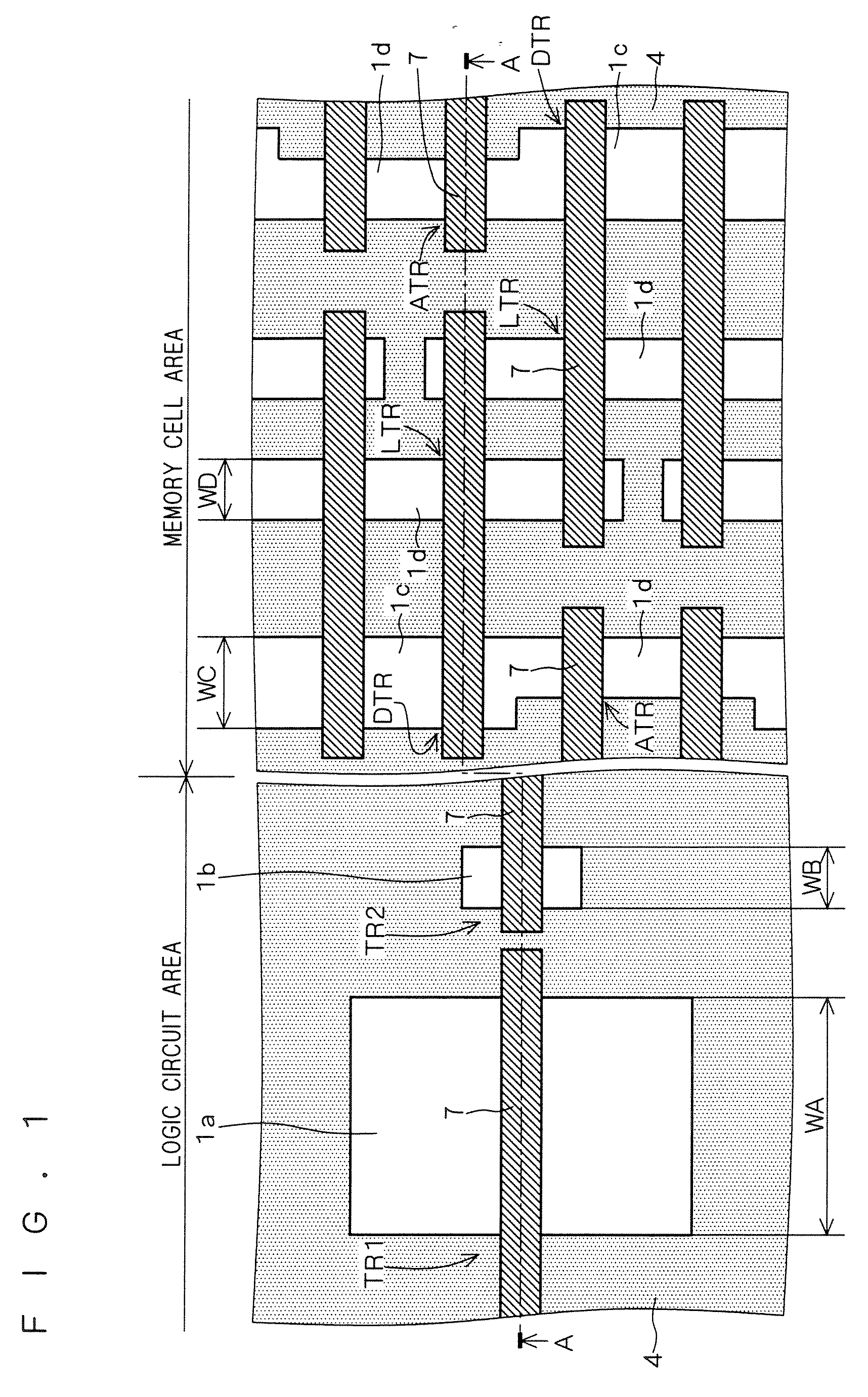Semiconductor device and method of manufacturing semiconductor device
a semiconductor device and semiconductor technology, applied in the direction of semiconductor devices, electrical devices, transistors, etc., can solve the problems of insufficient improvement of complicated mask pattern for use in the photolithography process, so as to achieve the effect of improving the performance of the semiconductor devi
- Summary
- Abstract
- Description
- Claims
- Application Information
AI Technical Summary
Benefits of technology
Problems solved by technology
Method used
Image
Examples
first preferred embodiment
[0030]FIG. 1 is a plan view showing the structure of a semiconductor device according to a first preferred embodiment of the present invention, and FIG. 2 is a sectional view taken along the line A-A in FIG. 1. FIG. 3 is a circuit diagram of a memory cell provided in the semiconductor device according to the present embodiment.
[0031] The semiconductor device according to the present embodiment has a logic circuit area in which a logic circuit is formed and a memory cell area in which a plurality of memory cells are formed. For example, the semiconductor device has a logic circuit for performing data processing on image data or communication data and eSRAM (embedded SRAM). In the memory cell area, a plurality of memory cells in eSRAM, for example, are arranged in an array. In the logic circuit area, a peripheral circuit including column and row decoders for driving the plurality of memory cells and a logic circuit other than the peripheral circuit for processing image data or commun...
second preferred embodiment
[0078]FIG. 23 is a plan view showing the structure of a semiconductor device according to a second preferred embodiment of the invention. FIG. 24 is a sectional view taken along the line C-C shown in FIG. 23. The semiconductor device according to the present embodiment differs from that of the first preferred embodiment in the width WC of the active region 1c as viewed from above and the height of the peripheral portion 4c in the isolation insulation film 4.
[0079] In the present embodiment, as shown in FIG. 23, the width WC of the active region 1c is equal to the width WD of the active region 1d as viewed from above. Accordingly, in the present embodiment, the width WB of the active region 1b, width WC of the active region 1c and width WD of the active region 1d are equal to one another, and smaller than the width WA of the active region 1a. The widths WB to WD of the active regions 1b to 1d are set not greater than 50 nm, and preferably at 20 to 50 nm from a manufacturability stan...
PUM
 Login to View More
Login to View More Abstract
Description
Claims
Application Information
 Login to View More
Login to View More - R&D
- Intellectual Property
- Life Sciences
- Materials
- Tech Scout
- Unparalleled Data Quality
- Higher Quality Content
- 60% Fewer Hallucinations
Browse by: Latest US Patents, China's latest patents, Technical Efficacy Thesaurus, Application Domain, Technology Topic, Popular Technical Reports.
© 2025 PatSnap. All rights reserved.Legal|Privacy policy|Modern Slavery Act Transparency Statement|Sitemap|About US| Contact US: help@patsnap.com



